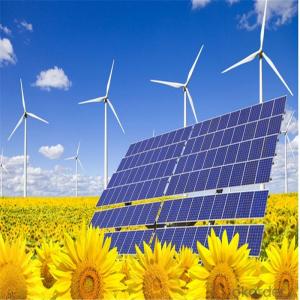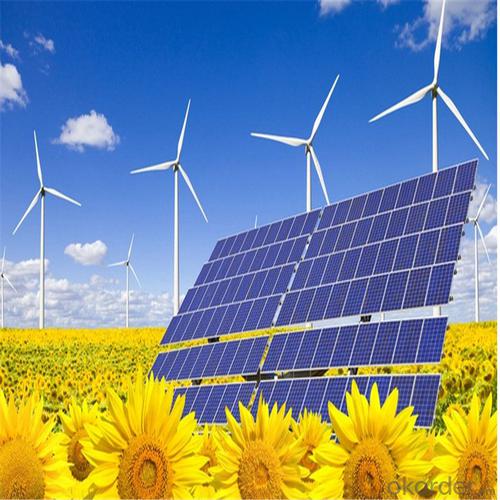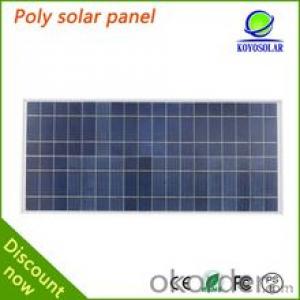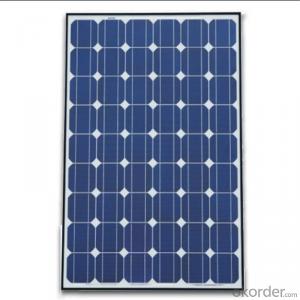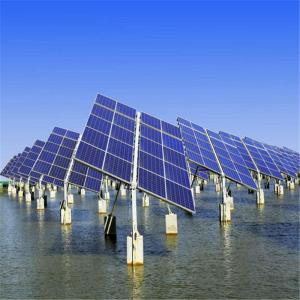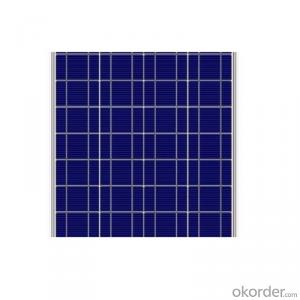225 Watt Home Depot Solar Cells Poly Solar Power Photovoltaic Cells
- Loading Port:
- China main port
- Payment Terms:
- TT or LC
- Min Order Qty:
- 1000 watt
- Supply Capability:
- 500000 watt/month
OKorder Service Pledge
OKorder Financial Service
You Might Also Like
Specification
Instruction
Quality and Safety
1. Rigorous quality control meets the highest international standards.
2. High-transmissivity low-iron tempered glass, strong aluminium frame.
3. Using UV-resistant silicon.
4. IS09001/14001/CE/TUV/UL
5.3w-300w mono & poly solar panel supply
Warranties
1. 10 years limited product warranty
2. 15 years at 90% of the minimal rated power output
3. 25 years at 80% of the minimal rated power output
Feature
1. High efficiency and High power.
2. Long-term electrical stability.
3. Lowest price and Fastest delivery.
4. Good quality and good service.
5.Bulk supply
6. Good Warranty
7.Big Sale
8.High quality
9.More than 35 years on the lifetime.
10 DHL/Fedex/UPS/TNT/EMS etc
Images
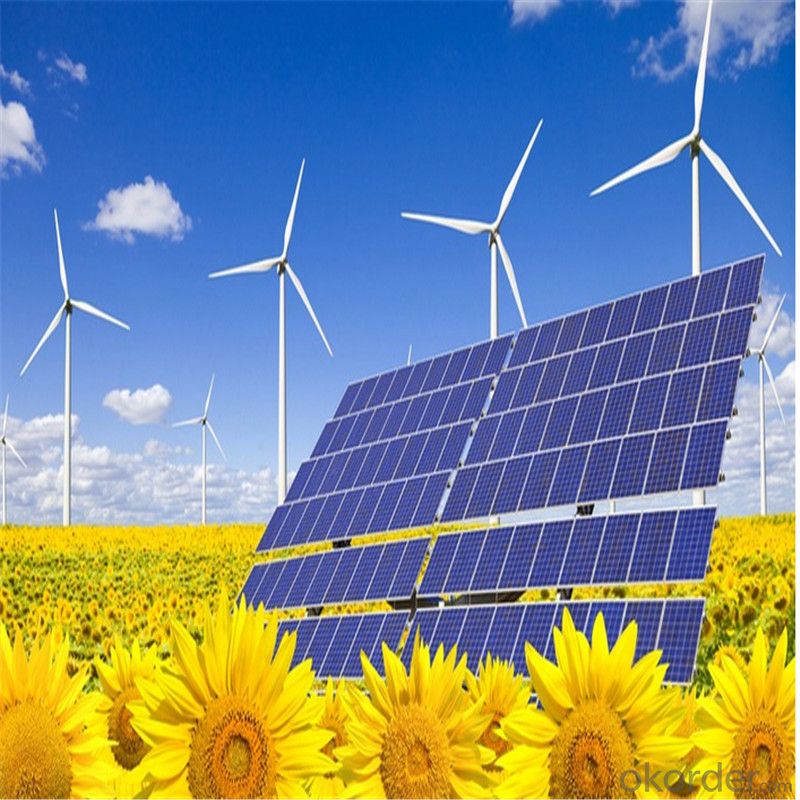

Specification
Model | SIM-100 |
Maximum Power at ST(Pmax)W | 100Wp |
Maximum Power Voltage(Vmp)V | 18.0V |
Maximum Power Current(Imp)A | 5.56A |
Open Circuit Voltage(Voc)V | 22.0V |
Short Circuit Current(Isc)A | 5.9A |
Cell Efficiency(%) | 17.0% |
Module Efficiency(%) | 15.37% |
Operating Temperature°C | -40°C to 85°C |
Maximum system voltage | 1000V(IEC)DC |
Power tolerance | -0.03 |
Temperature coefficients of Pmax | -0.45%/°C |
Temperature coefficients of Voc | -0.27%/°C |
Temperature coefficients of Isc | 0.05%/°C |
Weight(kg) | 7.4 |
Number of cell(pcs) | 4*9 |
FAQ
We have organized several common questions for our clients,may help you sincerely:
1). What’s price per watt?
A: It’s depends on the quantity, delivery date and payment terms of the order. We can talk further about the detail price issue. Our products is high quality with lower price level.
2). Can you tell me the parameter of your solar panels?
We have different series of cells with different power output, both from c-si to a-si. Please take our specification sheet for your reference.
3). How do you pack your products?
We have rich experience on how to pack the panels to make sure the safety on shipment when it arrives at the destination.
4). How long can we receive the product after purchase?
In the purchase of product within three working days, We will arrange the factory delivery as soon as possible. The perfect time of receiving is related to the state and position of customers. Commonly 7 to 10 working days can be served.
Solar Power Photovoltaic cells Cleaning method:
Cleaning steps: 1, observation, analysis 2, washing, brushing 3, over water.
1. Observed and analyzed
Check before cleaning pollution levels to be cleaned panels first. If it is light pollution - no particulate matter, only dust. We recommend rinsing or brushing alone only work on it. This will not only save, save manpower and resources, but also to extend the panel surface to maintain a certain brightness of life. It can increase its life!
2. Washing, brushing
When you need deep cleaning if you find that the surface particulate matter cannot be determined or not. It must first be rinsed, washed away after the scrub particles. Why scrub? Jobs can only flush out dust on the surface of the particulate matter, especially particulate matter. The effect can be said to be perfect. However, for a certain viscosity or pollutants generated due to chemical reaction is not complete. If let it develop over time, it will no longer be cleansed of these pollutants.
3. Over-water cleaning
This step is very important! Do not scrub in order to save after not rinse again. Flushing process will scrub clean down microscopic dust particles and other debris thoroughly washed with water from the panel surface.
Operating and staffing for Solar Power Photovoltaic cells
The general altitude operations (like cleaning the top of the building panels) we press a device with three-man team. Ground staff responsible for operations and support staff houses above hosts. Altitude cleaning operations (must be equipped with personal security) require two people, not only for the safe custody, but also for job rotation, rest. Such cooperation, whether or cleaning equipment utilization efficiency is relatively high; cleaning terrestrial photovoltaic power plants is relatively simple, one or two people can be. It does not impact on productivity.
- Q: 24V 200W solar cells can charge 12V battery?
- According to your battery and wiring box to see the line, 1 feet corresponding to 2,3,4 feet voltage is 12V, 24V, 36V, if the box in the line, you can choose from 1,3 out, but this is the All the way the battery is in a state of idle, a little waste Oh. It is best to use a 24V controller, which is more efficient.
- Q: Can solar cells be used for space applications?
- Yes, solar cells can be used for space applications. They are commonly used in space missions to generate electricity from sunlight. Solar cells are lightweight, durable, and efficient in converting sunlight into electrical energy, making them an ideal choice for powering spacecraft and satellites in the harsh environment of space.
- Q: Can the 156x156mm high efficiency single crystal cells assembly function better compared to the traditional one?
- Yes, according to our research and development, we have statistics to show that the 156x156mm high efficiency single crystal cells assembly does function better compared to the traditional one.
- Q: Can solar cells be used to power irrigation systems?
- Yes, solar cells can be used to power irrigation systems. Solar cells convert sunlight into electricity, which can be stored in batteries and used to power irrigation systems. This provides a sustainable and renewable energy source for agriculture and reduces dependency on traditional power grids.
- Q: How do solar cells perform in areas with high levels of pollen allergies?
- Solar cells are not directly affected by high levels of pollen allergies. However, if pollen accumulates on the surface of solar panels, it can potentially reduce their efficiency. Regular cleaning and maintenance can help mitigate any impact on performance in areas with high pollen allergies.
- Q: How do solar cells perform in areas with limited sunlight?
- Solar cells do not perform as efficiently in areas with limited sunlight, as their energy production is directly dependent on the amount of sunlight available. However, advancements in solar cell technology have improved their ability to generate electricity even in low light conditions.
- Q: How do solar cells perform in areas with high levels of radiation?
- Solar cells actually perform better in areas with high levels of radiation. This is because higher radiation levels provide more sunlight, which is the primary source of energy for solar cells. As a result, solar cells in areas with high radiation can generate more electricity and have increased efficiency compared to areas with lower radiation levels.
- Q: How do solar cells perform in areas with high levels of air pollution?
- Solar cells can be affected by high levels of air pollution as it can reduce their efficiency. The presence of pollutants in the air can decrease the amount of sunlight reaching the solar cells, leading to a decrease in their overall performance. Additionally, pollutants such as dust, soot, and smog can accumulate on the surface of the solar panels, further reducing their efficiency by blocking and scattering sunlight. Therefore, in areas with high air pollution, solar cells may not be able to perform at their optimal levels and may require more frequent cleaning and maintenance to ensure their effectiveness.
- Q: Can solar cells be used in recreational vehicles (RVs)?
- Yes, solar cells can be used in recreational vehicles (RVs). Solar panels mounted on the roof of an RV can capture sunlight and convert it into electricity, which can then be used to power various appliances and systems within the vehicle, such as lights, fans, refrigerators, and charging devices. This allows RV owners to have a reliable and sustainable source of energy while on the road, reducing their reliance on traditional power sources and increasing their independence during outdoor adventures.
- Q: Can solar cells be used to power remote sensing devices?
- Yes, solar cells can be used to power remote sensing devices. Solar cells convert sunlight into electrical energy, which can be stored in batteries to power remote sensing devices in areas where grid power is not available. This makes solar cells an efficient and sustainable solution for powering remote sensing devices.
Send your message to us
225 Watt Home Depot Solar Cells Poly Solar Power Photovoltaic Cells
- Loading Port:
- China main port
- Payment Terms:
- TT or LC
- Min Order Qty:
- 1000 watt
- Supply Capability:
- 500000 watt/month
OKorder Service Pledge
OKorder Financial Service
Similar products
Hot products
Hot Searches
Related keywords
